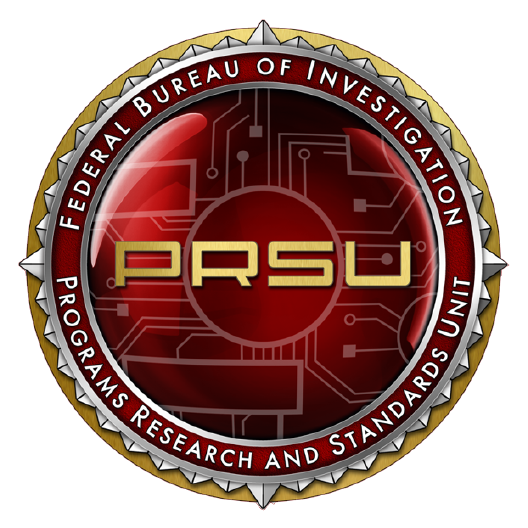Recording Techniques and Biology of Skin
 1 RECORDING TECHNIQUES AND BIOLOGY OF SKIN FINAL.mp4
— 127924 KB
1 RECORDING TECHNIQUES AND BIOLOGY OF SKIN FINAL.mp4
— 127924 KB
Video Transcript
Bryan T. Johnson, Major Incident Program Manager, Latent Print Unit, FBI Laboratory Division: Welcome to the first installment of the Postmortem Fingerprinting video series.
In this video, we will outline the majority of the basic equipment needed to properly and consistently obtain high-quality postmortem friction rich prints from decedents. Hopefully after watching this series, you will feel empowered, educated, and confident that even on the toughest of cases most decedents can still be printed, as long as the hands still possess the necessary layers of skin for printing.
Lastly, we would like to thank the District of Columbia, Office of the Chief Medical Examiner, for their collaboration and their participation in this series, ensuring that everyone watching is provided with the tools needed to identify unknown deceased everywhere.
Today, we will be discussing the different kinds of recording techniques needed to print most deceased persons. The most widely used method of fingerprinting the deceased is to use ink and paper strips or ink and fingerprint cards. The other common method is to use black fingerprint powder and a brush, followed by adhesive lifters, which are then placed on acetates. The most common method is to use ink and paper strips because it is cheap and effective. But it doesn't have great resolution with lower quality prints, which are often found when printing the deceased. These are pretty handy. They can be rolled with each of the fingers pretty easily. To assist the technician, there's a number of postmortem spoon-type devices that hold the cards so they can be more easily manipulated against the hand. This allows the person to be able to put the decedent's fingers into the slot, and it gives a little bit of curvature to ensure a clean and complete print is captured.
There are many types of these devices available in different sizes with more or less curvature. It mostly depends on how much concavity one prefers. With this type, the fingerprint card slides in and out of the sides. Other styles simply open and close to hold the card in place, but follow the same principle. For the strips, the technician can either use the pre-made strips that can be purchased from a manufacturer, or they can simply cut out strips from a standard 10-print card. The finger is then rolled from nail to nail in a bed of ink, and then nail to nail again on the strip in the indicated blocks. Alternatively to having a separate inking station with a roller and pad which allows one to continually reuse the ink, there are also portable inking devices from a variety of companies.
Roll-on pads in different sizes meant for different fingers, or even full palm prints, allows the practitioner to easily print the person and come in different styles, some of which are even disposable. The advantage of the larger pads is that they can potentially record multiple fingers at a time instead of just one finger. However, this process is not necessarily easy with the deceased. If deciding to use fingerprint powder, any black fingerprint powder will work. A foam brush or a camel hair brush will be the best method of applying the powder. The traditional larger squirrel hair or fiberglass brushes, used in latent print recovery, do not work well for this, because when they get wet at all they gum up and smear. The camel hair brushes are good because they have stiff bristles to actually work into the ridges.
Disposable foam painting brushes, found at a local hardware store, are often much more effective for application, and really making sure that an even distribution of powder is applied on the finger. To apply, simply dip the brush in the powder, knock off the excess, and gently brush it on the finger. Once that is done, an adhesive lifter will lift the fingerprint powder off the decedent's hand, replicating the friction ridge arrangement. It should be placed on the side of the finger, rolled around from nail to nail, and gently removed. The lifted print would then be placed on the backside of an acetate for preservation. These can be made by simply photocopying a fingerprint card onto blank commercially available acetate sheets. These adhesive type lifters come in a variety of sizes commercially. The square ones are typically for fingerprint cards, and there are larger strips for doing whole finger joints.
There are also full square size ones for doing an entire palm print. This allows the technician to apply the fingerprint powder to the whole surface of the hand utilizing a full sheet of lifter to capture the prints all at once. When capturing palm prints, one of the helpful things the technician can have is something round, like a large paper towel tube or a section of large PVC tubing. The card or the lifter can be secured to the tube using rubber bands, which allows it to roll the hand through to evenly capture all parts. Alternatively, the hand can just be pressed directly on, making sure that it's fully adhered before removing it. It would then be preserved by placing an acetate sheet over the adhesive side.
This is duct seal, and it is typically used for HVAC systems. It is not a postmortem fingerprinting tool necessarily, but it is helpful if there is a finger that is maybe not as cooperative or has wrinkles in it. This moldable putty can be shaped into a round circle with a depression in the middle. This allows the finger to actually conform to the curvature of the mold much like these spoons would. The technician can then put the sticker on the seal upside down and then press and squeeze it around the finger to capture the whole print. That ensures that it actually gets all the surface area of the finger. And this can be remolded to be whatever shape is needed for future use. It is also helpful because it can be reused if stored in a plastic bag, so it's an inexpensive tool to have around.
Before printing the bodies, it is important to understand the composition of the hands and why different techniques are needed to print them. The majority of the cases, especially ones that were recently deceased and have not yet showed signs of decomposition, can be printed as is. But the remaining cases will not be able to be printed without some level of reconditioning or manipulation. For this reason, understanding the basic biology of skin is important.
There are two types of skin on the body: thin skin, shown on the right, and thick skin, shown on the left. Thin skin covers most of the body and has hair and sweat glands. Thick skin is what covers the palms of the hands and the soles of the feet. Thick skin also has friction ridges on it that are unique and identifiable and what we are primarily concerned about in this discipline. The thick skin is comprised of three main layers. The first is the outer most layer the epidermis, which is what is usually printed antemortem and postmortem. The next layer is the dermis, which is found when the epidermis sloughs off. Beyond the dermis is the hypodermis and subcutaneous layer, which is mainly fat and not usable for identification.
The inside and outside of the epidermis are printable when removed, because the dermis is the support system for the epidermis and is comprised of double rows of ridges in the same formation as the epidermis. The epidermis and dermal layers have a three dimensionality that can be printed, if prepared correctly. The dermal ridges, however, are much smaller and more fragile in nature than the epidermal ridges, and therefore require extra care and preparation when printing. The dermis is most often encountered in macerated and burn remains, because the epidermis has to naturally slough off in order to be able to see it and use it. It is not typically accessible in a case that has not yet macerated, decomposed, or had thermal trauma. The epidermis cannot be cut or peeled off without some level of degradation to the skin structure.
To summarize, the layers of skin can be useful in many ways. If there is still skin on the hands, there is a highly likelihood, given the proper training and tools, that postmortem prints can be obtained. The epidermis, the dermis, and even the inside of the epidermis can be printed. The inside of the epidermis very often survives fire events, where the dermis usually will last through maceration much longer than the rest of the skin. What is important is to understand all the ways the skin layers can be helpful and how to best utilize the postmortem fingerprinting techniques to affect an identification.
In this installment, we explored some of the tools that can be used for postmortem fingerprint capture. There are many more tools available, as well as numerous ingenious hacks that can be learned from people within the field who do this every day. What's most important is that those recording prints take the time to get to know their equipment, know when to use which capture method, and realize that there is no wrong way to capture prints, as long as the result is sufficient for comparison and identification. By knowing the basic biology of the skin and being able to recognize the different layers so that the right techniques are performed, most cases can be fingerprinted.
We encourage you to watch the remaining videos in this series so that you may learn rehydration and reconditioning techniques that can further assist in obtaining the prints needed to identify the deceased. We also encourage you to reach out to the FBI Laboratory with any questions you may have regarding this content or any case related questions they may assist you with.

